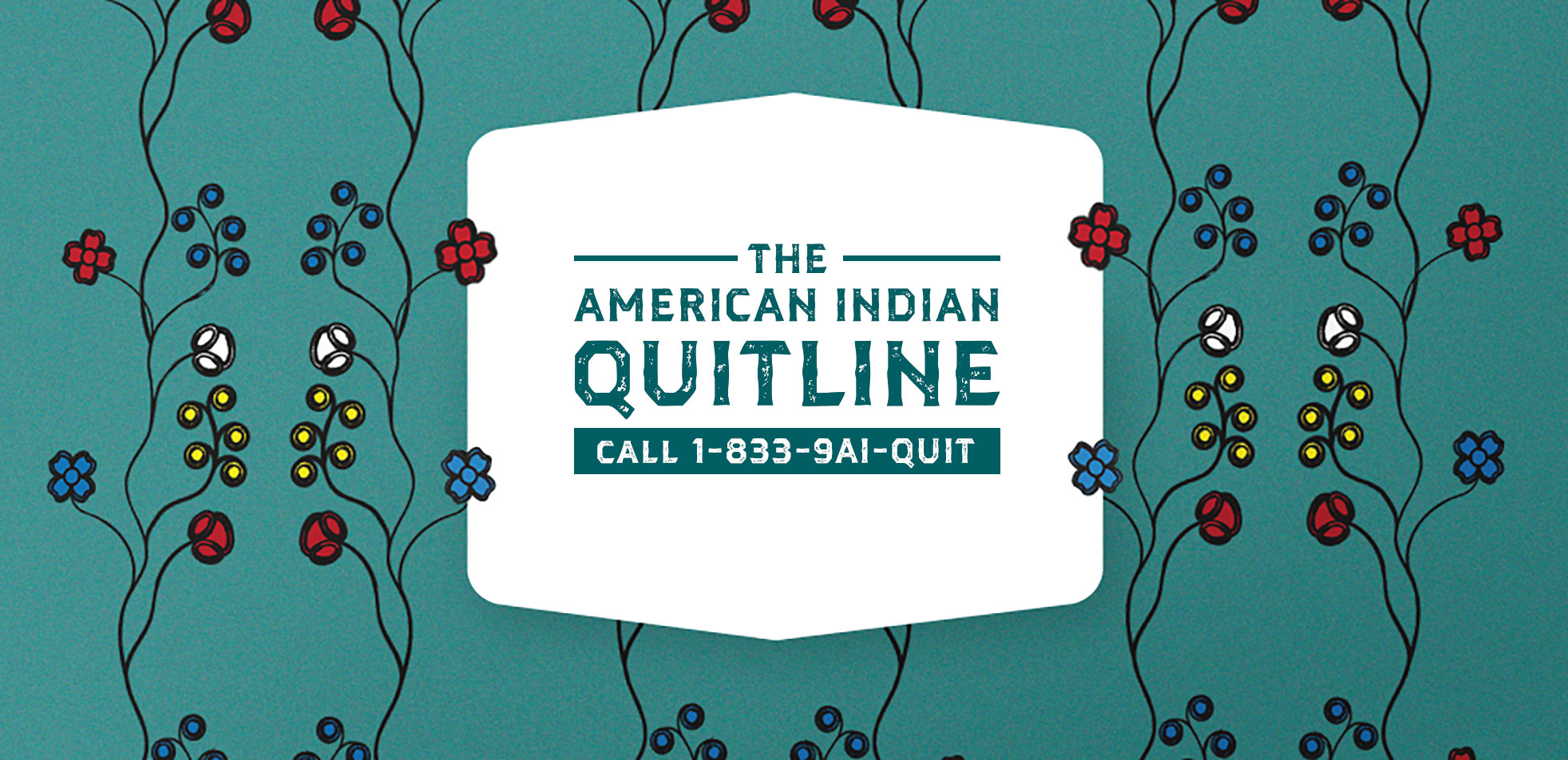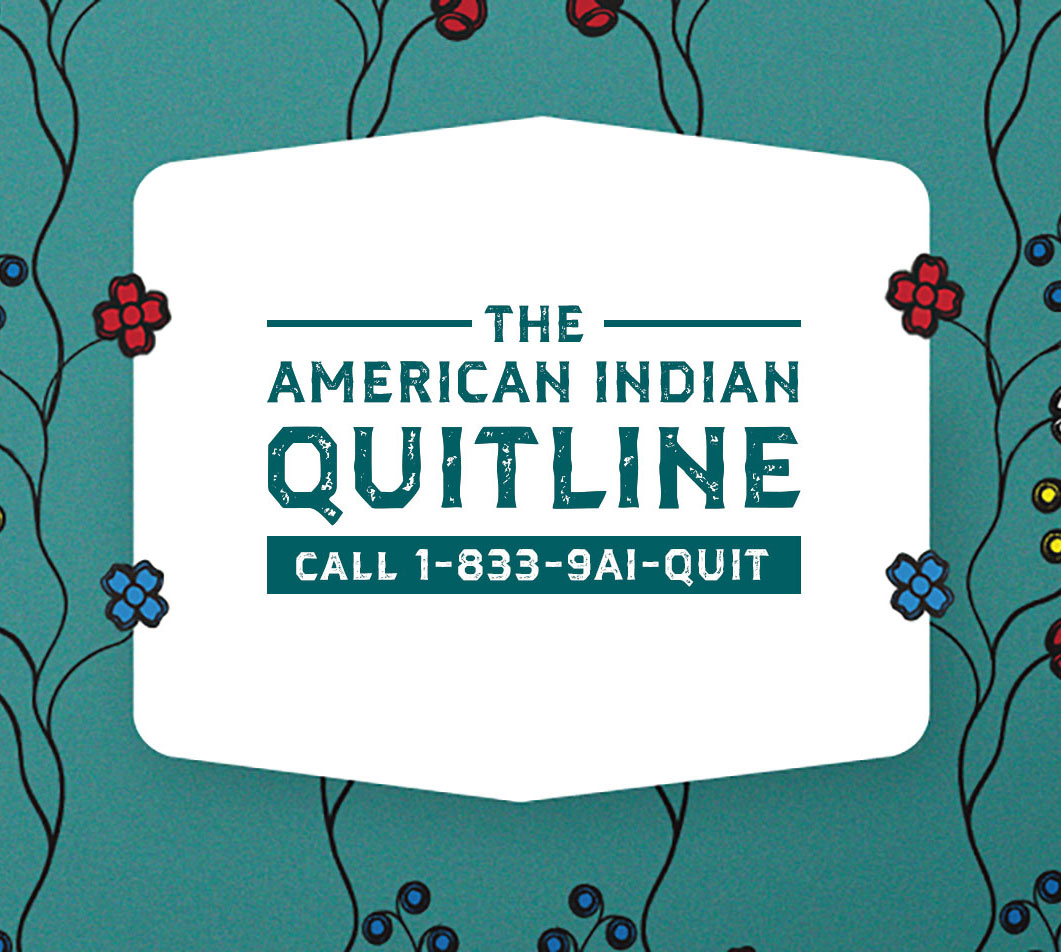The American Indian Quitline - Call 1-833-9AI-QUIT
Our Traditions To Keep And Our Way
To Quit Commercial Tobacco
Our ways of using sacred tobacco span generations, honoring the Creator through spiritual and ceremonial practices. More than ever, commercial tobacco—such as cigarettes, e-cigarettes and chew—threatens our way of life with sickness, disease and death. Now we have our way to quit commercial tobacco too: the American Indian Quitline.
About The American Indian Quitline
Developed with guidance from the community, the American Indian Quitline from Quit Partner offers completely free and specially designed support to help you, or someone you know, quit commercial tobacco.
How We Can Help
Please call the American Indian Quitline at 1-833-9AI-QUIT (1-833-924-7848). If you live in Minnesota, you can get the following free help to quit commercial tobacco:
- A dedicated team of American Indian coaches who understand your culture and respect your traditions.
- Up to 10 calls with the coaches, allowing you to get to know them.
- Up to 12 weeks of free lozenges, gum or patches to help you quit the addiction.
- Other free, helpful tools like text messages and emails to encourage you along the way.
Click here to sign up for the American Indian Quitline
Curious About Other Free Quit Support?
In addition to the American Indian Quitline, Quit Partner offers a number of other free ways to support your quit through its family of programs. Click on the link below to discover the free support that’s here 24/7 to help you—or someone you love—quit commercial tobacco.
Do you know the difference?
Commercial Tobacco
- In Minnesota, five of the six leading causes of death among American Indians are related to commercial tobacco use: cancer, coronary heart disease, diabetes, stroke and lower respiratory disease.1
- 59 percent of American Indians in Minnesota report to be current smokers (compared to 14 percent of all Minnesota adults).2,3
- Secondhand smoke from commercial tobacco is harmful to nonsmokers and contains known toxins and cancer-causing poisons.4
- The tobacco industry commonly uses cultural symbols and designs to target racial or ethnic populations, including American Indians. American Spirit cigarettes have been promoted as “natural” tobacco and the package features an American Indian smoking a pipe.5
1. Great Lakes EpiCenter. Community Profile: Minnesota, Wisconsin & Michigan Tribal Communities, 2007. Great Lakes Intertribal Council, Inc. 2007.
AND, Center for Health Statistics, Minnesota Department of Health. Populations of Color in Minnesota, Health Status Report, Update Summary, Spring 2009. All accessed Sept. 1, 2010.
2. American Indian Community Tobacco Projects. Tribal Tobacco Use Project Survey, Statewide American Indian Community Report. 2013.
3. ClearWay Minnesota SM and the Minnesota Department of Health. Tobacco Use in Minnesota: 2014 Update. 2015.
4. Minnesota Indian Gaming Association. MIGA Study Details Job Benefits to Rural Minnesota.
5. “Tobacco Use Amoung U.S. Racial/Ethnic Minority Groups-African Americans, American Indians and Alaska Natives, Asian Americans and Pacific Islanders, and Latinos: A Report of the Surgeon General.” U.S. Department of Health and Human Services, 1998.
Traditional Tobacco
- Tobacco is known as “Asemaa” to the Ojibwe and Anishinaabe and as “Can-sa-sa” to the Dakota and Lakota.
- Traditional tobacco is for spiritual, cultural and ceremonial use, and it ensures the continuance of the Native way of life.
- Traditional tobacco is used in many ways, including to honor and welcome guests, to communicate with the Creator or Spirit World, and as a sacrifice to the Great Spirit. It’s also used an offering to those asked to pray or share wisdom.

